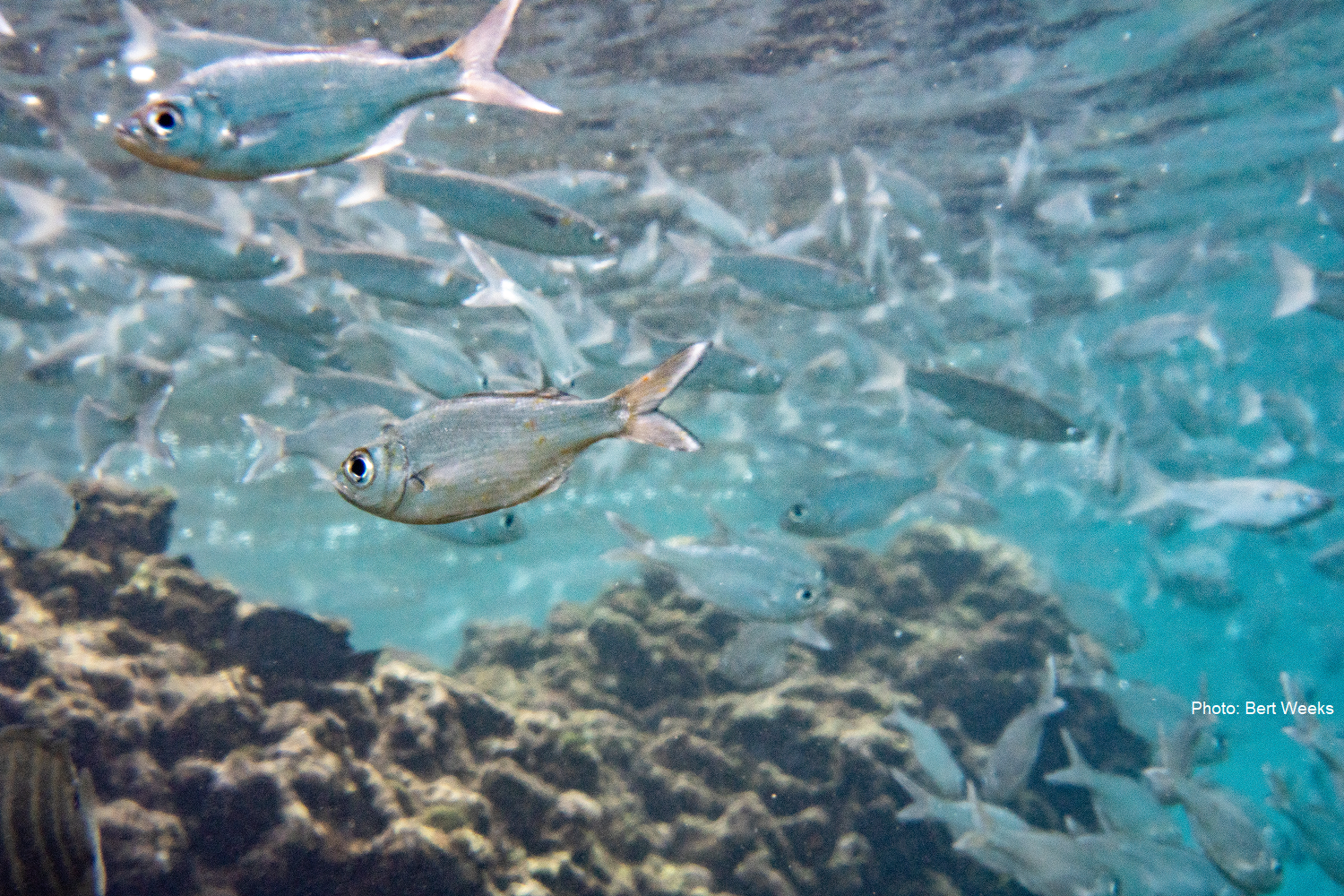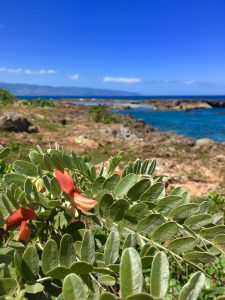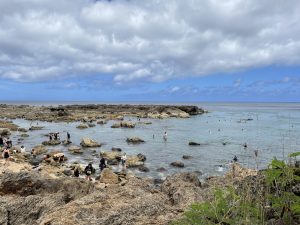Pūpūkea Marine Life Conservation District (MLCD)
Covering about a mile of coastline and consisting of about 100 acres, the Pūpūkea Marine Life Conservation District is home to an abundance of native marine life and provides critical habitat for many endangered species. It is one of the very few places in Hawai‘i where an unchannelized stream flows into a nearshore ecosystem (Waimea Bay, Kamananui River) and both marine and terrestrial resources are actively managed. Submarine caves are scattered around the MLCD and general area, including around the northeast point of the Pūpūkea cove. Pūpūkea (Sharks Cove) is one of the most popular shore-entry destinations for snorkelers and SCUBA divers on O‘ahu, second only to Hanauma Bay.
The entire Pūpūkea MLCD receives high wave activity in the winter months, mobilizing underwater boulders even at depths of 40 feet. Therefore it
is educationally valuable as a study of high-wave impact zones because the wave activity has a profound effect on the ecology of the MLCD. Coral cover is relatively low and those that do live in the area are species that can withstand pounding waves.
The area within the Pūpūkea MLCD that stretches from behind the Sunset Beach fire station over to Kulalua Point (the point between Shark’s Cove and Keiki Beach) is known as Kapo‘o. Kapo‘o gets its name from the loud echoing or booming sound of the waves that crash onto the exposed ancient reef, and during the winter surf season is the perfect time to listen and watch for these explosive displays.
Within Kapo‘o is a place of peace and safety; a sanctuary functioning much like a nursery: a pu‘uhonua for marine life. Many of us have experienced this protected place whether it was transiting by and seeing it; taking our keiki to play in its shallow waters; or perhaps you’ve taken the time to throw on a mask and snorkel to explore its shallow marine habitat. The Kapo‘o Tidepool, commonly referred to as the Pūpūkea or Shark’s Cove Tidepool, has served as an iconic landmark for those that live in the community or have spent time in the area.
The Kapo‘o Tidepool area is unique from other coastal zone habitats found around Hawai‘i. It is a protective sub-tidal pool roughly the size of three football fields that maintains a connection to the ocean at several points; therefore, it is not, by definition, a tidepool. Though tidepools do occur at Kapo‘o, the feature most closely aligns with the description of a lagoon or coastal embayment. Either way, all three habitat types can function as an important nursery for reef fish and other marine life.
During months of little wave action, the Tidepool takes on a brackish water nature when it is fed fresh water from submarine springs. The unique and dynamic ecosystem of the tidepool hosts an abundance of native juvenile fish species that help recharge fish stocks in the Pūpūkea MLCD. This in turn restocks fish in open fishing areas along the neighboring coastline outside of the MLCD in what is called spillover. Protecting fish and other marine species here means increasing numbers elsewhere.
Mālama Pūpūkea-Waimea (MPW), the community organization that helps to care for, educate about, and protect the Pūpūkea Marine Life Conservation District, has performed years of kilo, or observations, in and around the Kapo‘o Tidepool to capture changes in the natural environment which experiences heavy human use year-round. Kilo coupled with western scientific survey methods helps MPW understand the environment, ecology and the impacts to marine life in the Kapo‘o Tidepool. Well over 80 unique species of fish, 30 species of limu (algae), and dozens of coral and invertebrate species make up the tidepool’s rich diversity of native marine life. Additionally, shorebirds, turtles, Hawaiian monk seals, eagle rays, and white-tip reef sharks often pay visits to the area. In addition to conducting biological monitoring, MPW works to actively steward this special place through vigorous outreach and educational programs, and a Native Hawaiian Plant Coastal Restoration project that helps to reduce runoff and sedimentation onto the coral reef. MPW is currently the only Makai Watch community on O‘ahu and offers regular public training sessions for anyone who is interested. To learn more about Makai Watch, visit https://dlnr.hawaii.gov/makaiwatch/.
Pūpūkea Marine Life Conservation District Management Plan
DAR has collaborated with Mālama Pūpūkea-Waimea to prepare a management plan for Pūpūkea Marine Life Conservation District, which included extensive community interviews and input. The completed plan was then presented back to members of the Pūpūkea and North Shore communities. Their feedback was incorporated into the latest draft, which is now in the implementation phase.
The management strategy of this plan is focused on inter-jurisdictional collaborations and coordination. Actions within each of the four pillars focus on bringing partners together to tackle large-scale threats to the MLCD with targeted actions and finding solutions to the many threats affecting the nearshore waters of Pūpūkea MLCD.
Recognizing the need and commitment to preserve this special place, this management plan is the first step in a coordinated effort to adaptively manage Pūpūkea MLCD for present and future generations.
To view this management plan, click below:
To learn more about Mālama Pūpūkea-Waimea and the work they’re doing, visit https://pupukeawaimea.org.










